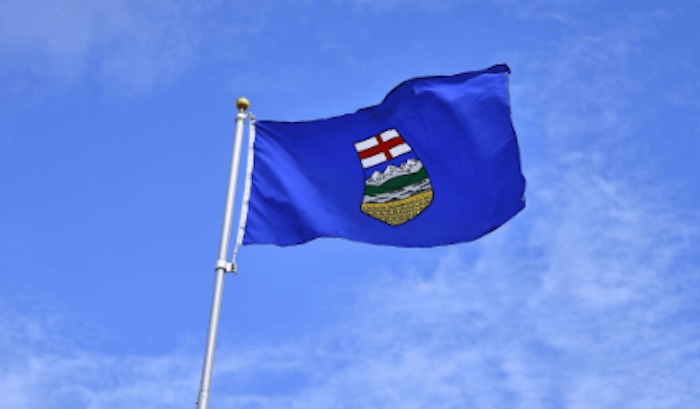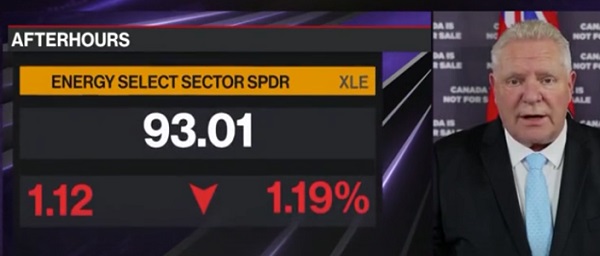Alberta
Alberta announces 11.6 billion surplus

Strong year-end positions Alberta for stability
A solid end to 2022-23 secures Alberta’s long-term financial outlook and provides stability against future economic uncertainty.
Alberta ended the fiscal year with an $11.6-billion surplus, exceeding the Budget 2022 projected surplus by $11.1 billion. In 2022-23, the province paid down $13.3 billion in debt, eliminating an estimated $260 million in debt servicing costs annually and reducing the overall debt burden on Albertans.
The province’s strong financial situation also resulted in the market value of the Alberta Heritage Savings Trust Fund growing by $2.5 billion to $21.2 billion. The Heritage Fund’s year-over-year growth was primarily due to actions taken by the Alberta government to retain $1.25 billion in net investment income from 2021-22 and deposit $753 million into the fund.
Growing the Heritage Fund benefits current and future generations of Albertans by ensuring the province is well equipped to handle future uncertainty.
In March of this year, Alberta’s government made legislative changes to ensure the fund continues to grow to support Albertans now and in the future. These changes allow the government to retain all investment income within the Heritage Fund instead of it being transferred to general revenue.
“The 2022-23 year-end report is a very positive one. We promised to keep our economy moving forward and Alberta is reaping the benefits. Albertans can rest easy knowing that Alberta’s prosperity today means more stability tomorrow as we continue to pay down debt and save for the future.”
Alberta’s government remains committed to responsible financial management. For the current and subsequent years, Alberta’s new legislated fiscal framework will continue to address Alberta’s unique economic and revenue volatility. The framework requires government to put at least half of any surplus toward debt repayment, with the remainder going toward additional debt repayment, the Heritage Fund or one-time initiatives that do not permanently increase government spending.
Revenue
Revenue in 2022-23 was $76.1 billion, $13.5 billion more than estimated in Budget 2022, including:
- $25.2 billion in non-renewable resource revenue, $11.4 billion more than estimated in Budget 2022.
- $26.5 billion in tax revenue, $3.5 billion higher than estimated in Budget 2022. This included:
- $8.2 billion in corporate income tax, $4.1 billion more than estimated in Budget 2022.
- $13.9 billion in personal income tax, $543 million more than estimated in Budget 2022.
At the time the Budget 2022 forecast was developed, the global economy was experiencing significant uncertainty related to COVID-19, global growth and energy demand. Budget 2022 was based on a West Texas Intermediate (WTI) forecast of US$70 per barrel in 2022-23.
Oil prices surged last year due to many global factors. WTI reached US$120 per barrel in June 2022 and averaged US$89.69 for the 2022-23 fiscal year, a large reason for the increase in resource and corporate income tax revenue.
Expense
Expense in 2022-23 was $64.5 billion, $2.4 billion more than estimated in Budget 2022, including:
- $25.2 billion in health expense to expand capacity and for higher costs in response to Albertans’ evolving health-care needs.
- Investments of $8.9 billion and $6.1 billion in K-12 and post-secondary education, respectively, providing quality learning for Alberta’s youth and building on the province’s world-class post-secondary environment.
Among other factors, the overall increase from Budget 2022 was due to:
- A $2.2-billion increase in operating expense, mainly for health, increased compensation costs from settled agreements, electricity rebates and other affordability measures, and the cost of selling oil.
- A $300-million increase in COVID-19 recovery costs.
- A $167-million increase in debt servicing costs, mainly due to the impact of higher interest rates.
Affordability
In response to rising living costs, Alberta’s government introduced a series of affordability measures in 2022-23 that helped slow inflation and make life more affordable for Albertans. In 2022-23, the government provided $2.9 billion in affordability supports, including:
- $1.1 billion for the fuel tax relief program, funded through a reduction in revenue.
- $304 million for indexation of the personal income tax system to inflation retroactive to the 2022 tax year, funded through a reduction in revenue.
- $644 million for electricity rebates.
- $441 million for affordability payments to eligible seniors, families with children and vulnerable Albertans on core benefits programs.
- $51 million for indexation of benefit payments to inflation (Alberta Seniors Benefit, Assured Income for the Severely Handicapped, Income Support, Persons with Developmental Disabilities).
To further reduce the cost burden on Albertans, Alberta’s government recently extended the pause on the collection of the provincial fuel tax, saving Albertans 13 cents on every litre of gasoline and diesel until the end of 2023.
Alberta
Big win for Alberta and Canada: Statement from Premier Smith

Premier Danielle Smith issued the following statement on the April 2, 2025 U.S. tariff announcement:
“Today was an important win for Canada and Alberta, as it appears the United States has decided to uphold the majority of the free trade agreement (CUSMA) between our two nations. It also appears this will continue to be the case until after the Canadian federal election has concluded and the newly elected Canadian government is able to renegotiate CUSMA with the U.S. administration.
“This is precisely what I have been advocating for from the U.S. administration for months.
“It means that the majority of goods sold into the United States from Canada will have no tariffs applied to them, including zero per cent tariffs on energy, minerals, agricultural products, uranium, seafood, potash and host of other Canadian goods.
“There is still work to be done, of course. Unfortunately, tariffs previously announced by the United States on Canadian automobiles, steel and aluminum have not been removed. The efforts of premiers and the federal government should therefore shift towards removing or significantly reducing these remaining tariffs as we go forward and ensuring affected workers across Canada are generously supported until the situation is resolved.
“I again call on all involved in our national advocacy efforts to focus on diplomacy and persuasion while avoiding unnecessary escalation. Clearly, this strategy has been the most effective to this point.
“As it appears the worst of this tariff dispute is behind us (though there is still work to be done), it is my sincere hope that we, as Canadians, can abandon the disastrous policies that have made Canada vulnerable to and overly dependent on the United States, fast-track national resource corridors, get out of the way of provincial resource development and turn our country into an independent economic juggernaut and energy superpower.”
Alberta
Energy sector will fuel Alberta economy and Canada’s exports for many years to come

From the Fraser Institute
By any measure, Alberta is an energy powerhouse—within Canada, but also on a global scale. In 2023, it produced 85 per cent of Canada’s oil and three-fifths of the country’s natural gas. Most of Canada’s oil reserves are in Alberta, along with a majority of natural gas reserves. Alberta is the beating heart of the Canadian energy economy. And energy, in turn, accounts for one-quarter of Canada’s international exports.
Consider some key facts about the province’s energy landscape, as noted in the Alberta Energy Regulator’s (AER) 2023 annual report. Oil and natural gas production continued to rise (on a volume basis) in 2023, on the heels of steady increases over the preceding half decade. However, the dollar value of Alberta’s oil and gas production fell in 2023, as the surging prices recorded in 2022 following Russia’s invasion of Ukraine retreated. Capital spending in the province’s energy sector reached $30 billion in 2023, making it the leading driver of private-sector investment. And completion of the Trans Mountain pipeline expansion project has opened new offshore export avenues for Canada’s oil industry and should boost Alberta’s energy production and exports going forward.
In a world striving to address climate change, Alberta’s hydrocarbon-heavy energy sector faces challenges. At some point, the world may start to consume less oil and, later, less natural gas (in absolute terms). But such “peak” consumption hasn’t arrived yet, nor does it appear imminent. While the demand for certain refined petroleum products is trending down in some advanced economies, particularly in Europe, we should take a broader global perspective when assessing energy demand and supply trends.
Looking at the worldwide picture, Goldman Sachs’ 2024 global energy forecast predicts that “oil usage will increase through 2034” thanks to strong demand in emerging markets and growing production of petrochemicals that depend on oil as the principal feedstock. Global demand for natural gas (including LNG) will also continue to increase, particularly since natural gas is the least carbon-intensive fossil fuel and more of it is being traded in the form of liquefied natural gas (LNG).
Against this backdrop, there are reasons to be optimistic about the prospects for Alberta’s energy sector, particularly if the federal government dials back some of the economically destructive energy and climate policies adopted by the last government. According to the AER’s “base case” forecast, overall energy output will expand over the next 10 years. Oilsands output is projected to grow modestly; natural gas production will also rise, in part due to greater demand for Alberta’s upstream gas from LNG operators in British Columbia.
The AER’s forecast also points to a positive trajectory for capital spending across the province’s energy sector. The agency sees annual investment rising from almost $30 billion to $40 billion by 2033. Most of this takes place in the oil and gas industry, but “emerging” energy resources and projects aimed at climate mitigation are expected to represent a bigger slice of energy-related capital spending going forward.
Like many other oil and gas producing jurisdictions, Alberta must navigate the bumpy journey to a lower-carbon future. But the world is set to remain dependent on fossil fuels for decades to come. This suggests the energy sector will continue to underpin not only the Alberta economy but also Canada’s export portfolio for the foreseeable future.
-

 2025 Federal Election22 hours ago
2025 Federal Election22 hours agoMORE OF THE SAME: Mark Carney Admits He Will Not Repeal the Liberal’s Bill C-69 – The ‘No Pipelines’ Bill
-

 2025 Federal Election15 hours ago
2025 Federal Election15 hours ago‘I’m Cautiously Optimistic’: Doug Ford Strongly Recommends Canada ‘Not To Retaliate’ Against Trump’s Tariffs
-

 International2 days ago
International2 days agoTrump’s ‘Golden Dome’ defense shield must be built now, Lt. Gen. warns
-

 2025 Federal Election20 hours ago
2025 Federal Election20 hours ago‘Coordinated and Alarming’: Allegations of Chinese Voter Suppression in 2021 Race That Flipped Toronto Riding to Liberals and Paul Chiang
-

 Business2 days ago
Business2 days agoSaskatchewan becomes first Canadian province to fully eliminate carbon tax
-

 2025 Federal Election2 days ago
2025 Federal Election2 days agoFight against carbon taxes not over yet
-

 2025 Federal Election2 days ago
2025 Federal Election2 days agoMark Carney refuses to clarify 2022 remarks accusing the Freedom Convoy of ‘sedition’
-

 Automotive2 days ago
Automotive2 days agoElectric cars just another poor climate policy






